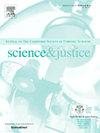先进的深度学习自动分类从标准发行的枪支发射的子弹
IF 2
4区 医学
Q2 MEDICINE, LEGAL
引用次数: 0
摘要
枪支暴力仍然是一个重大的全球问题,每年造成无数无辜生命的丧失。本研究探索了基于深度学习的自动发射子弹标记分类。为了解决审查员主观同源判断结果不一致的问题,我们实现了自动分类,以提高法医枪支检查的准确性并降低主观性。我们收集了6000发发射子弹的数据集,这些子弹来自中国执法机构常用的六种标准枪支。使用BalScan系统捕获了子弹侧面的全景图像。为了为我们的深度学习模型创建多样化和信息丰富的输入,我们采用了三种不同的图像预处理策略:全景成像、陆地雕刻区域(LEA)分割(枪管膛线产生的条纹和凹槽区域)和直线分割。然后,我们在这个数据集上微调高级预训练的ResNet50网络,专门为图像分类任务设计。我们的实验证明了我们的方法的有效性,在不同的枪支类型中实现了很高的分类精度。值得注意的是,LEA分割策略优于其他方法,突出了关注特定感兴趣区域对准确分类的重要性。具体来说,我们采用LEA分割策略的算法,对于子弹膛线痕迹高度相似的6种枪械,分类准确率达到97.2%,对于膛线特征差异较大的枪械,分类准确率达到100.0%,明显优于其他算法。这项研究为通过人工智能驱动的解决方案在法医枪支检查领域的进一步研究和发展铺平了道路,旨在提高枪支识别和调查过程的效率和准确性。本文章由计算机程序翻译,如有差异,请以英文原文为准。
Advanced deep learning for automatic classification of fired bullets from standard-issue firearms
Gun violence continues to be a significant global issue, causing countless innocent lives to be lost each year. This study explores deep learning for automated fired bullet marking classification. To address inconsistent results from examiners’ subjective same-source judgment, we automate classification to boost forensic firearm examination accuracy and reduce subjectivity. We collected a dataset of 6000 fired bullets from six types of standard-issue firearms commonly used by Chinese law enforcement agencies. Panoramic images of the lateral surfaces of the bullets were captured using the BalScan system. To create diverse and informative inputs for our deep learning model, we employed three distinct image preprocessing strategies: panoramic imaging, land engraved area (LEA) segmentation (the area with striations and grooves created by the gun barrel’s rifling), and line segmentation. Then, we fine-tuned the advanced pre-trained ResNet50 network on this dataset, specifically designed for image classification tasks. Our experiments demonstrated the effectiveness of our approach, achieving high classification accuracy across different firearm types. Notably, the LEA segmentation strategy outperformed the other methods, highlighting the importance of focusing on specific regions of interest for accurate classification. To specify, our algorithm with the LEA segmentation strategy achieves a classification accuracy of 97.2% for six types of firearms with highly similar bullet rifling marks, while attaining 100.0% accuracy for firearms exhibiting significant differences in rifling characteristics, demonstrating a clear superiority over other algorithms. This study paves the way for further research and development in the field of forensic firearm examination through AI-driven solutions, aiming to improve the efficiency and accuracy of firearm identification and investigation processes.
求助全文
通过发布文献求助,成功后即可免费获取论文全文。
去求助
来源期刊

Science & Justice
医学-病理学
CiteScore
4.20
自引率
15.80%
发文量
98
审稿时长
81 days
期刊介绍:
Science & Justice provides a forum to promote communication and publication of original articles, reviews and correspondence on subjects that spark debates within the Forensic Science Community and the criminal justice sector. The journal provides a medium whereby all aspects of applying science to legal proceedings can be debated and progressed. Science & Justice is published six times a year, and will be of interest primarily to practising forensic scientists and their colleagues in related fields. It is chiefly concerned with the publication of formal scientific papers, in keeping with its international learned status, but will not accept any article describing experimentation on animals which does not meet strict ethical standards.
Promote communication and informed debate within the Forensic Science Community and the criminal justice sector.
To promote the publication of learned and original research findings from all areas of the forensic sciences and by so doing to advance the profession.
To promote the publication of case based material by way of case reviews.
To promote the publication of conference proceedings which are of interest to the forensic science community.
To provide a medium whereby all aspects of applying science to legal proceedings can be debated and progressed.
To appeal to all those with an interest in the forensic sciences.
 求助内容:
求助内容: 应助结果提醒方式:
应助结果提醒方式:


